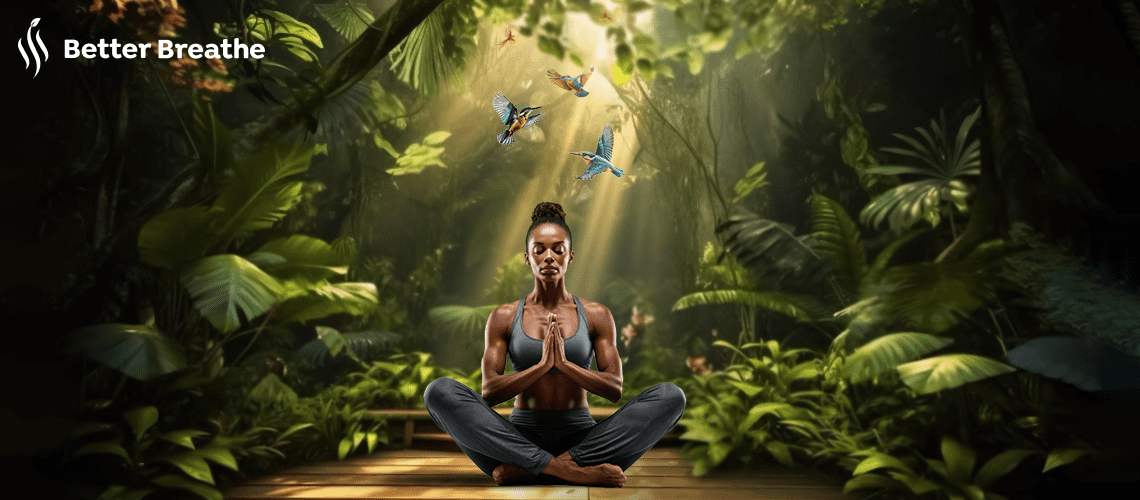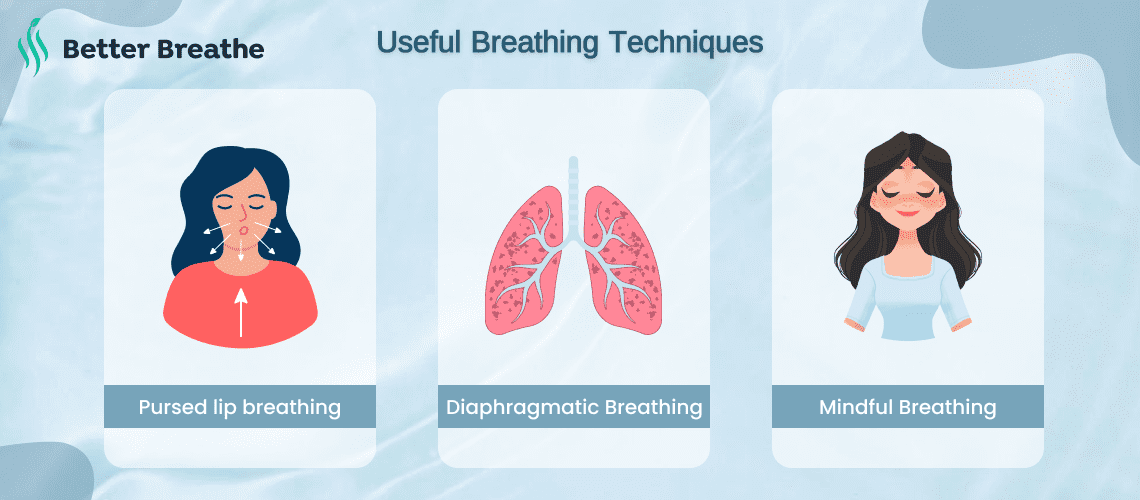Blog
Blog Details
Learn Hidden History of Breathing Exercises and Their Evolution
May 16, 2024
4 min read

Breathing Techniques have an origin in the common era (CE). The first original texts are found in the history of Indian sources. These sources are mainly the Upanishads, Yoga Sutras, Bhagavad Gita, and Hathapradipika. The texts derived from these ancient Indian sources bring forward the practice of breathing and relate it to the higher context of human states like consciousness, transcendence, mysticism, and complete awareness of one's own Body. These texts also showed that breathing correctly can lengthen the lifespan.
Patanjali dates back to 400 BCE. Yoga sutras have illustrated that pranayama is the fourth part of a path which is eight-limbed. It is done after the completion of the asana and should be done before meditation. It is considered a gateway practice to achieve greater transcendence and can even assist in attaining moksha if practiced in the right manner with utmost dedication.
The Hathapradipika dates back to 1500 CE. It is written and compiled by Svatmarama. These texts are one of the oldest manuals that have survived to date. They preach codified asana, Kriva, and pranayama. The language used in these texts is said to be very mystic and exaggerated. One exemplary exaggerated quote is that by the regular consistent and dedicated practice of Pranayama, an individual can protect himself from all kinds of diseases. However, by faulty or wrong practice, the practitioner is likely to invite and give way to all kinds of ailments.
It is from the beginning of the 1900s when Breathing Practices were brought forward to the masses. It started on a small scale but formed an essential part of many Yoga Styles. These styles further formed the basis of the contemporary classes that were continued around the world.

The practices followed in modern terms of breathing can be classified into three styles. These three styles are breath and alternate breathing through the nostrils, kapalabhati which refers to the fast Breathing Techniques, and the hyperventilation exercise which is called the Ujjagy Pranayama.
The contemporary styles of breathing include holotropic breathing, breath hold training, Relaxation Breathing, Buteyko Breathing, freediving training, and kundalini. All these major techniques were found beyond the context of Yoga. These techniques focus on a single benefit which is improving overall health. These practices also aid in Mindfulness, Stress Relief, sleep and meditation, improve bowel movements and digestion, Reduce Anxiety and cause relaxation, regulate the immune system and can even cause natural highs or trips.
Performance of all the practices should be done appropriately to get the best benefits and produce positive effects. However, it is observed that most modern teachers primarily aim to build individual styles and destroy the essence of these practices. The highest benefit from Breathing Exercises can be achieved by performing a combination of various techniques.
The best results are achieved by integrating the processes in a progressive and structured system with variations of different workouts. The end goal of the combination should be clear so that the body is not overworked. However, it is often seen that most practitioners become harsh and rigid without comprehension of following the safety parameters which can have various fatal consequences.
The biggest flaw observed with contemporary breathing practices is that they promote erroneous breathing. This exaggerates medical and health conditions and is dangerous. These new methods have no scientific basis and are complex. The aim of any Breathing Training program should be to inculcate best breathing practices that are science-based and safe for individuals to perform daily. Pregnant women should perform these exercises under the supervision of a doctor.

Paying attention to the breath and finding the right breathing techniques can bring drastic benefits to the body. Here is a list of different Breathing Techniques that can be followed to improve lung conditions.
Pursed lip breathing is a crucial part of the pulmonary rehabilitation program. Patients of chronic obstructive pulmonary disease (COPD) and asthma are greatly benefited from this breathing technique. The technique helps in the proper working of the diaphragm and increases the amount of oxygen in the body. The airways are opened for a longer period.
The pursed lip breathing technique can be performed by breathing in through the nose and breathing out through the mouth while the lips are pursed. The duration of breathing out should be twice as long as the duration of breathing in.
Various symptoms of lung conditions, anxiety, or stress are considered to be relieved by trying diaphragmatic breathing techniques from ancient times. Diaphragmatic Breathing is also referred to as belly breathing from time immemorial. The main aim of this breathing technique is to increase the strength of the lungs and make them more efficient.
The diaphragmatic breathing technique can be performed by placing the hand on the belly lightly and breathing in till the belly rises. Breathe in only through the nose and breathe out through the mouth for twice as long.
Another deep breathing exercise for dealing with stress and anxiety is Mindful Breathing. This breathing technique extensively focuses on the breath and uses focused attention. The focus should be on the natural rhythm of breathing in and out. The technique is advised to follow in a quiet place without any distractions.
These are a few of the popular breathing techniques followed from ancient times. With the advancement in technology, there are numerous applications developed to assist individuals in practicing different breathing techniques. The apps help users enhance breathing habits by inculcating simple techniques and exercises. One of the most popular and chosen breathing assistance apps is Deep Breathing. There are other apps also which can be followed by the users to get the best results. But all the applications cater to one purpose which is to bring the mind out of distracting thoughts and emotions and put it back at peace, tranquility, and stability.
These are the top most chosen apps to help users enhance breathing habits by inculcating simple techniques and exercises. There are other apps also which can be followed by the users to get the best results. But all the applications cater to one purpose which is to bring the mind out of distracting thoughts and emotions and put it back at peace, tranquility, and stability.
Individuals should focus on having a balanced diet and practicing regular breathing techniques to bring balance and peace to their lives. Breathing exercises not only help with physical health but also improve psychological and emotional well-being. Users who need assistance with breathing exercises can download Better Breathe. The application involves Yogic Pranayama techniques and is available in both the Play Store and the App Store.